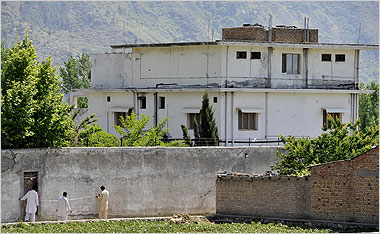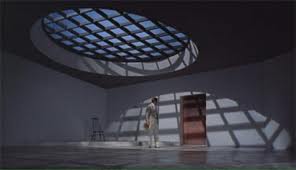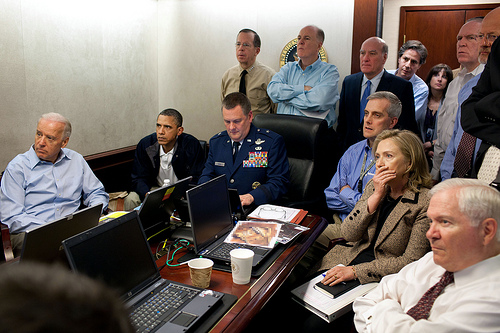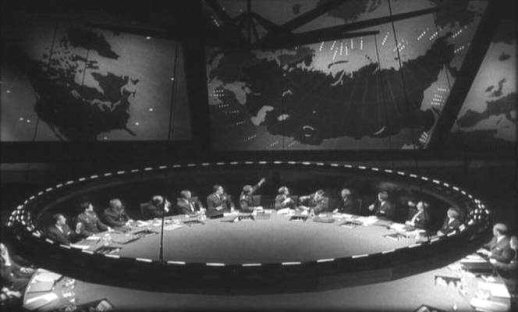
"Whatever it is, it's not a mansion." This was the reaction of a friend to the term used so often in the press to describe Bin Laden's seedy concrete bunker, with its crummy striped awnings and tacky furnishings. Certainly, it's a long aesthetic way from Newport. Disparage it though we may, however, it remains rather astonishing that this large compound was built without drawing the attention of our many intelligence services. (What Pakistan's military knew is another story.) Presumably, Bin Laden's experience in the construction business was a factor. But fear seems also to have played a role. According to reports, anyone who got too close was warned away by armed guards.

The Bin Laden compound makes an interesting contrast with the secret modern lairs created for Bond villains by the legendary production designer Ken Adam. These have routinely been described as unrealistic, insofar as they could never be built without drawing attention. It's curious now, in retrospect, to think that it was fear that kept the local population from Dr. No's island hideaway (which was just off British and American territory). Though Bond films make us think of visual extravagance, the most visually arresting set from the film was the rather raw interrogation room, with its cross-beam, ocular ceiling. What was in Osama's basement?

If the Bin Laden compound is less aesthetically spectacular than the evil lairs imagined by Adam, so is the command center from which he was dispatched. Photographs of the White House "Situation Room" show the president and his security team jammed uncomfortably into a small room with dark wainscotting and unflattering light. But for the presidential seal by the door, it could be a conference room at an airport hotel. By any stretch, it is a far cry from the war room Adam created for Stanley Kubrick's Dr. Strangelove: a massive room, dramatically lit, with an immense circular table and global maps on the walls. Adam said, and the anecdote may be apocryphal, that after his election, one of the first things Ronald Reagan wanted to see was this room. Hollywood shaped his vision. It shapes ours, too.

